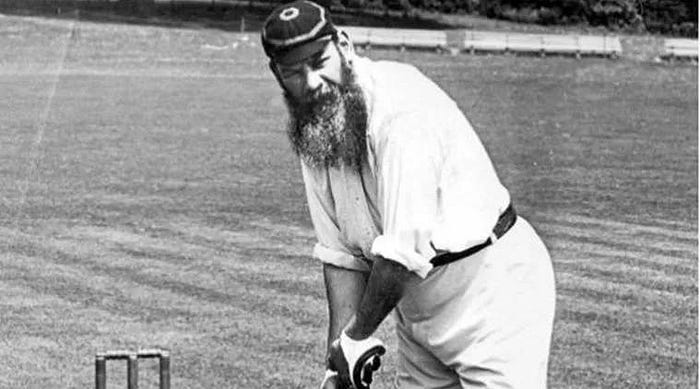Who is the Father of Cricket?

“Father of Cricket” is famously attributed to former English cricketer William Gilbert Grace (WG Grace). Born on July 18, 1848, in Bristol, WG Grace lived for just 67 years, but dedicated 44 of those to first-class cricket across numerous English clubs. His unparalleled passion for cricket has earned him an indelible place in the sport’s history.
WG Grace’s Batting Records
WG Grace’s skill and sheer determination are perhaps best reflected in his staggering 54,000+ runs scored in 870 first-class matches over a 44-year career, from 1865 to 1908. Though records from his later years are scarce, his consistent excellence at the crease is well documented. Known for his innovative, versatile batting, he inspired future generations by excelling in various strokes with remarkable precision. In his first-class career, Grace accumulated 124 centuries and 250 fifties, remaining not out on 104 occasions.

One of Grace’s most famous achievements came in 1876 when he amassed 839 runs in just eight days, a feat that included multiple triple centuries. His highest score, 344, came for the Marylebone Cricket Club (MCC) against Kent, followed by 177 for Gloucestershire two days later. Just another two days after that, he scored an unbeaten 318 against Yorkshire. He became the first player in first-class cricket to achieve a triple century.
WG Grace’s Bowling Records
As an all-rounder, Grace was equally formidable as a bowler, tallying 2809 wickets in first-class matches, with his best bowling figures standing at 10 for 49. He played and captained for several teams, including England, Gloucestershire, and MCC, and was known for his exceptional cricketing intellect, which made him a natural leader on any team.

His career spanned a time when cricket was still transitioning into a professional sport. Though an amateur, Grace was among the first to request financial support for playing, earning £1500 from organizers for England’s first tour to Australia in 1873–74. He also sought testimonials to promote his medical practice.
Grace’s athletic prowess extended beyond cricket — he competed in the 440-yard hurdles and played football, golf, lawn bowls, and curling. In one legendary story, he once left an innings of 224 for England to compete in a quarter-mile hurdles championship.
WG Grace passed away on October 23, 1915, at the age of 67 from a heart attack. His funeral was held at Beckenham Cemetery in Kent, marking the end of a remarkable career and life.
Father of Indian Cricket: KS Ranjitsinhji

The title of the “Father of Indian Cricket” belongs to KS Ranjitsinhji, the former Maharaja of Nawanagar (now in Gujarat). Though he never played for India, Ranjitsinhji represented England and became only the second English cricketer to score a century on debut.
Ranjitsinhji’s contribution to cricket extends beyond his 989 Test runs across 15 matches, with an average of 44.95. Known for introducing the leg glance and enhancing the cut shot, he was a master of innovative techniques. He ended his first-class career with 24,692 runs at an average of 56.37 — the highest by an England-based batsman until Geoffrey Boycott’s retirement in 1986.
Ranjitsinhji reached peak form in the 1896 county season, where he fearlessly scored centuries against strong Yorkshire bowlers and saved crucial matches against teams like Gloucestershire. He became the first amateur, and only the second player after WG Grace, to score over 1000 runs in a single County season.
After losing an eye in a hunting accident, Ranjitsinhji’s form declined, leading to his retirement in 1920. Though he reportedly planned to write a book about batting with limited vision, it was never completed.
Ranjitsinhji passed away on April 2, 1933, from heart failure. In his honor, a year later, India’s national first-class cricket competition, now known as the Ranji Trophy, was established, with a trophy donated by Maharaja Bhupinder Singh of Patiala.
Comments
Post a Comment